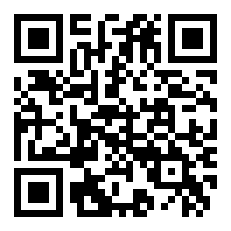Willingness to Pay for Cataract Surgery in Pre-Operative Cataract Patients in Zaria
Community Ophthalmology
Abstract
Introduction: Cataract is the leading global cause of blindness accounting for more than half (51%) of the world’s blindness and one third (33%) of visual impairment (blindness and low vision)1 . It was also estimated that the backlog of cataract blind may reach 50 million by 2020.1,2In Nigeria, cataract is the leading cause of blindness accounting for 43%, with a low cataract surgical rate (CSR) of <500/million population.3 This is grossly below the World Health Organization (WHO) target of 2000 – 3000/million population for developing countries3 . More than 3.6 million people are blind due to cataract in Sub-Saharan Africa, and this number is projected to rise every year.4 Cost is a major barrier in most low and middle-income countries (60 – 91%).
Methods: A cross-sectional hospital based study. Simple random sampling of consenting participants was taken from screened patients who presented for free cataract surgery at Ahmadu Bello University Teaching Hospital (ABUTH) possibility of overestimation/bias is high more so that it was a free cataract surgery service.
References
S.P. Mariotti, D. Pascolini. Global estimates of visual impairment: 2010. Br J Ophthalmol 2012 May;96(5): 614-618.
Stevens GA, White RA, Flaxman SR, Price H, Jonas JB, Keeffe J, Leasher J, Naidoo K, Pesudovs K, Resnikoff S, Taylor H, Bourne RR; Vision Loss Expert Group. Ophthalmology. 2013 Jul 10. doi: pii: S0161 - 6420(13)00480-6.
Fatima Kyari, Murthy V. S. Gudlavalleti, Selvaraj Sivsubramaniam, Clare E. Gilbert, Mohammed M. Abdull, Gabriel Entekume, Allen Foster, and the Nigeria National Blindness and Visual Impairment Study Group. Prevalence of Blindness and Visual Impairment in Nigeria: The National Blindness and Visual Impairment Survey. Invest Ophthalmol Vis Sci. 2009; 50:2033– 2039 DOI:10.1167/iovs.08-3133.
Naeim A, Keeler EB, Gutierrez PR, Wilson MR, Reuben D, Mangione CM. Is cataract surgery cost-effective among older patients with a low predicted probability for improvement in reported visual functioning? Med Care. 2006;44(11):982- 989.
Lewallen S. Poverty and cataract—a deeper look at a complex issue. PLoS Medicine/Public Library of Science. 2008;5 (12): e245.
Wang M, Zuo Y, Lin X, Ling Y, Lin X, Li M, et al. (2015) Willingness to Pay for Cataract Surgery Provided by a Senior Surgeon in Urban Southern China. PLoS ONE 10(11): e0142858. doi: 10.1371/ journal.pone.0142858
Rapid assessment of Avoidable Blindness and willingness to pay for cataract surgery in tribal region of Surat district of Gujarat state, India. Project report for MSc in Community Eye Health 2010 – 2011. Last accessed online from London School of Hygiene and Tropical Medicine on 7th August 2017 at https://www.lshtm.ac.uk /research/library-archives-service.
Downloads
Published
How to Cite
Issue
Section
License
Copyright (c) 2023 Transactions of the Ophthalmological Society of Nigeria

This work is licensed under a Creative Commons Attribution-NonCommercial-NoDerivatives 4.0 International License.

















